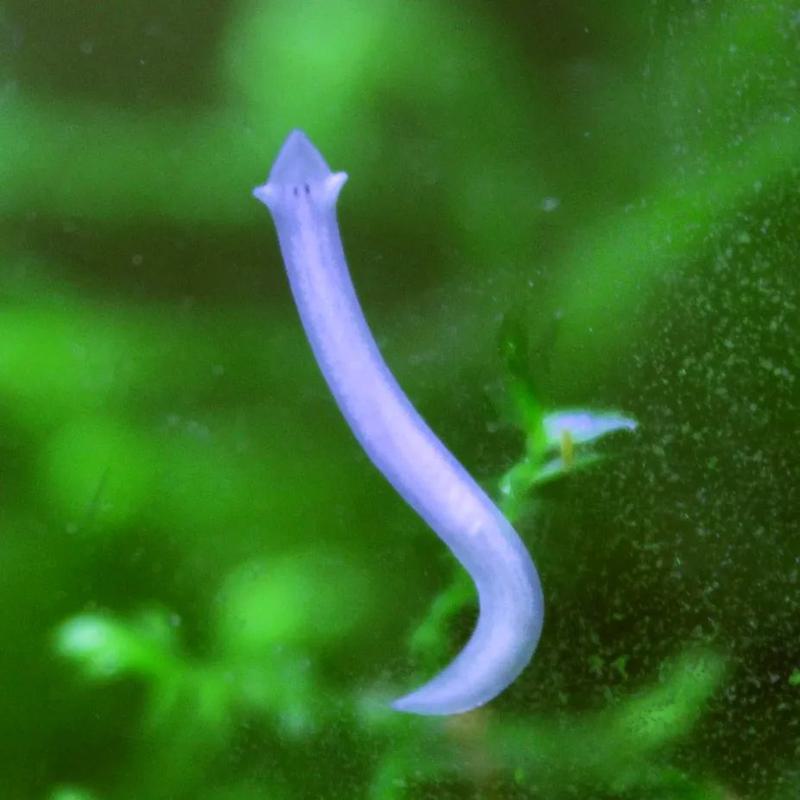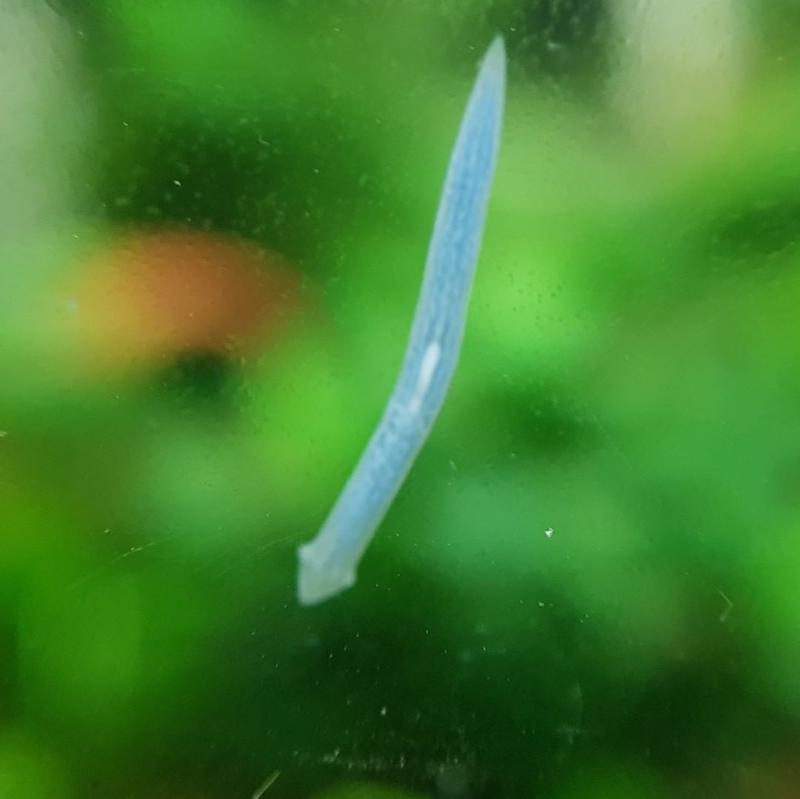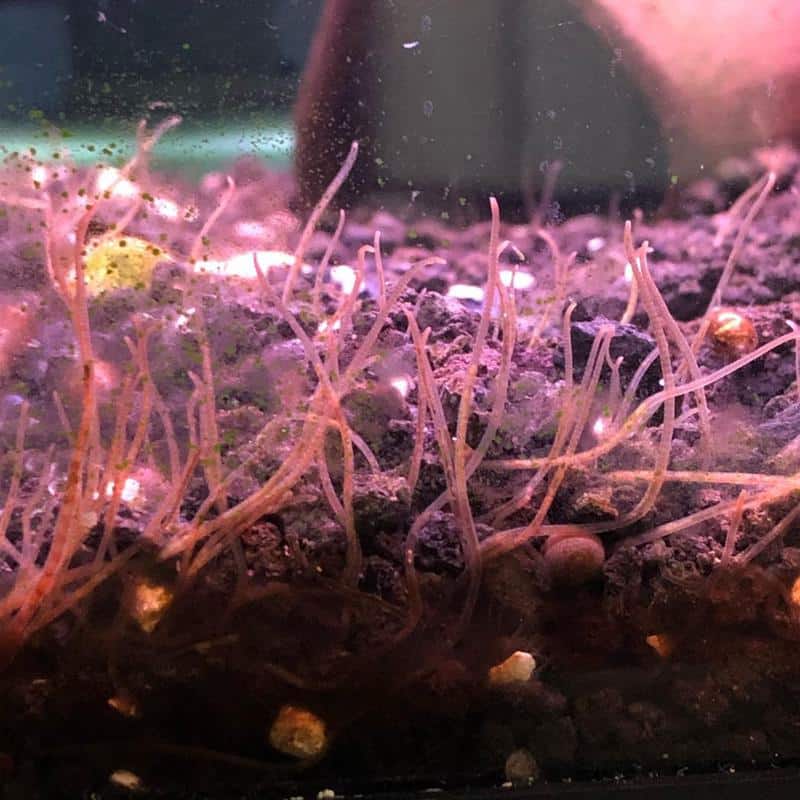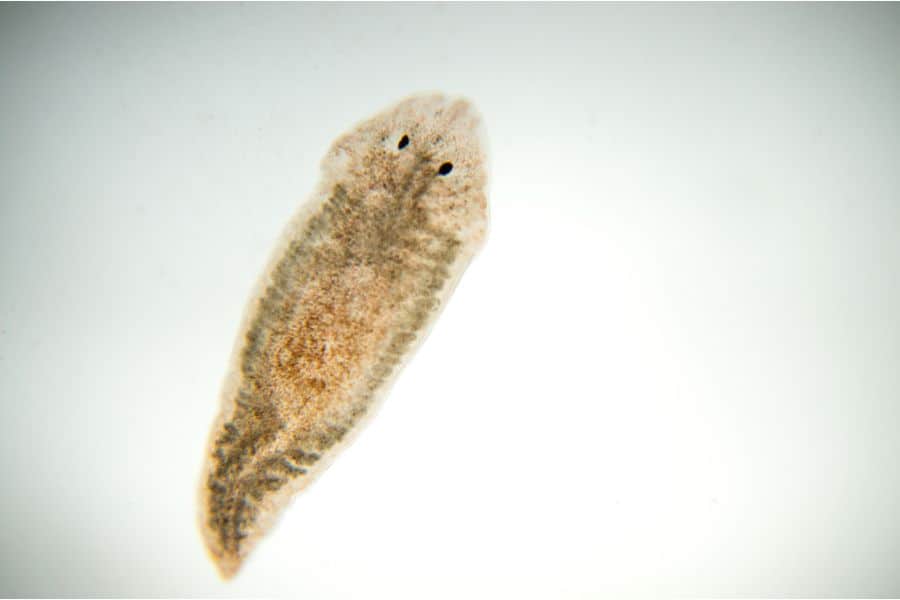If you’ve noticed long, flat worms with triangular heads scurrying around your aquarium water, chances are you’re dealing with planaria worms.
These pests can be a real pain in your fish tank as not only do they look unsightly, but they’re notoriously hard to eradicate once an infestation sets in.
But don’t worry, our guide will help you understand how to kill planaria, properly identify them, and the best ways to prevent these pesky worms in the first place.
Let’s dive straight in!
What Are Planaria Worms?
Planaria are a type of flatworm that are quite common in home aquariums – most aquarists will deal with them at some point in their fishkeeping journey!
Planaria worms can live in both freshwater and saltwater setups and normally find their way into fish tanks by hitchhiking onto live plants, fish, shrimp/snails, and live foods.
These aquarium worms are extremely small, often maxing out at around 10 mm in length – this makes them a little difficult to spot at first glance. They are normally white, but they can also be brown or pinkish depending on the specific type.
This species of aquarium flatworm has a characteristic triangular head, as well as a long and flat body shape. You’ll normally see them glide across the tank glass or dart through the substrate, though they also like to hide in small spaces and crevices.
Bear in mind that there are several types of aquarium flatworms (some are also white in color) other than planaria that can infest fish tanks, including rust brown flatworms, Acropora-eating worms, and Rhabdocoela worms.
Are Planaria Harmful to Fish?
Once you’ve identified that the unsightly worms in your fish are indeed planaria, you’re probably asking yourself “are planaria worms harmful to fish?”.
While most species of planaria worms are harmless to fish, these pests have been known to attack and kill small shrimp species like dwarf freshwater shrimp.
In addition, some types are parasitic and can pose a threat to fish. Dangerous types of planaria worms are pretty rare in aquariums, but they can still happen.
It’s best to err on the side of caution and eliminate any planaria worms in your aquarium to ensure the safety of your fish.
Are Planaria Harmful to Humans?
No, planaria worms are not harmful to humans, so you don’t need them to avoid touching them (though you may still want to wear gloves!).
These aquarium worms are actually quite useful in scientific studies as they can regenerate!
How to Get Rid of Planaria Worms

Although most types of planaria worms aren’t dangerous to fish or your tank, it’s always best to eliminate these pesky pests as they can be harmful to shrimp (besides, they look unsightly!).
Unfortunately, getting rid of planaria worms can be challenging, primarily because of how easily and rapidly they reproduce. This aquarium flatworm can procreate asexually, so just one worm will quickly turn into many.
That’s why it’s so important to kill all of the planaria worms in your aquarium – if you miss a worm, it will reproduce and the infestation will continue.
But don’t worry, we’ll be going over some of the most effective methods on how to kill planaria worms so you can be free of these pests for good!
1. Use Medication Containing Fenbendazole
The quickest and most efficient way to kill planaria in aquariums is by using a medication containing fenbendazole. This is a dewormer that is commonly used for dogs (Panacur-C is the most readily available brand), but it also works wonders on planaria outbreaks in fish tanks.
You’ll need to remove any snails in your tank as this ingredient is lethal to most species – nerite snails are particularly sensitive. In addition, make sure you take out your carbon filter media so it doesn’t absorb the medication.
Dose 0.01 grams of Panacur-C per 10 gallons of water, wait 48 hours, then dose your tank again. This should be enough to kill off all planaria worms in your fish tank.
Once you’ve treated your aquarium, vacuum your substrate to remove as many of the dead worms as you can so they don’t pollute your water.
2. Reduce Feeding
Planaria worms thrive in aquariums with lots of food, so one way to reduce their population is by cutting back on the amount you feed your tank.
Only offer your fish as much food as they can consume in around two to three minutes. Remove any uneaten food after this time so it doesn’t have a chance to sink to the aquarium bottom.
3. Clean the Substrate
Cleaning your aquarium substrate regularly with a gravel vacuum will not only suck up stray planaria eggs and worms but will also keep the tank bottom free of leftover food and waste that the worms feed on.
4. Boil/Freeze Planaria Worms
Some aquarists advise boiling or freezing planaria eggs and worms once you’ve captured them to properly eliminate them. Although tempting, you should never crush or chop them up by hand.
Planaria worms are incredibly resilient and can regenerate if cut into pieces. If you chop up a planaria worm into several segments, each of those segments will grow into new worms!
5. Use an Aquarium Worm Trap
Another useful method for managing planaria populations is by using an aquarium worm trap. You can purchase this type of container online – they’re usually targeted for pest snails, but they also work well for aquarium worms.
The trap is normally made out of clear glass and features tiny holes that allow worms to enter without being able to exit. You’ll need to put a bit of bait inside the trap like some fish food to entice the worms inside.
It’s important to note that his method may not be the best choice if you have small invertebrates in your tank as they may also get caught in the trap.
As planaria worms prey on shrimp, they may feast on any invertebrates that are unfortunate enough to get caught in an enclosed space with them.
How to Prevent Planaria In Fish Tank

The best way to prevent planaria worms from infesting your aquarium is to simply stop them from infiltrating your tank from the start.
This involves quarantining new live fish or shrimp/nails, live rock, and live plants for at least two weeks before you put them in your main tank. Doing so will allow you to spot any planaria worms or eggs that may emerge.
You should also regularly clean your tank substrate and perform water changes to keep your aquatic environment healthy.
Planaria vs Detritus Worms

Planaria are often misidentified as detritus worms as both species look quite similar. Detritus worms are much more common in aquariums (most fish tanks have them!) than planaria worms.
Detritus worms are segmented worms (known as annelid worms) that are members of the same family as earthworms and leeches. They are long, slender, and whitish-brown, similar to planaria.
However, detritus worms are much thinner and smaller than planaria worms. They have a more stringy appearance (they kind of look like pieces of thread) and don’t have triangular-shaped heads.
Detritus worms also tend to exist in bigger groups than planaria worms, so if you have large groups of worms in your aquarium, you’re likely dealing with detritus worms.
Detritus worms are completely harmless – they can actually be quite beneficial as they help keep your tank clean by eating decaying plant and fish waste.
They are also far easier to eradicate than planaria. There are a few methods to do this, including vacuuming the substrate regularly, reducing the amount you feed your fish, cleaning the aquarium filter, and using a diluted solution of hydrogen peroxide (remove livestock before you proceed with this treatment!).
Read More: What Are Water Mites?
FAQs
Why Are Planaria Worms Immortal?
Planaria worms are commonly referred to as being immortal for a couple of reasons. Firstly, they have regenerative abilities that allow them to regrow and multiply if they are chopped into pieces.
And secondly, these worms are able to forgo the aging process and keep their cells multiplying.
Does a Planarian Worm Feel Pain?
No, a planarian worm does not feel pain when you cut it in half or into segments, just a bit of pressure.
Is Planaria Good for the Aquarium?
Planaria worms can be beneficial for an aquarium (as long as there are no shrimp present) if their populations are controlled as they are good clean-up crew members. However, it can be difficult to prevent infestations getting out of hand, so this is something to be aware of.
What Happens When You Touch a Planarian Worm?
Nothing will happen to you if you touch a planarian worm, but a planarian worm will certainly react if you touch it! You see, planaria worms are sensitive to light and touch. Subjecting these critters to either of these things will cause them to move away quickly.
Where Is Planaria Commonly Found?
Planaria worms are most commonly found in freshwater, normally shallow waters, though some species are marine or terrestrial.
In the wild, planaria worms usually live underneath rocks or tree branches, but they also hide among thick vegetation.
What Do Planaria Worms Eat?
Planaria worms are carnivorous and mostly feed on small shrimp, insects like water fleas, and other types of worms. In home aquariums, they will feast on decaying fish or invertebrates, as well as uneaten fish food.
Large terrestrial species of this worm have an interesting way of consuming their prey – they wrap their bodies around their target and secrete a thick mucus that slowly dissolves their victim.
Do Planaria Lay Eggs?
Yes, some types of planaria worms do lay eggs. Planaria eggs are usually found under rocks or leaves.
However, most species reproduce asexually by splitting their body in two, thus creating two worms in the process.
Final Thoughts
Planaria worms can be a real nuisance in aquariums, but thankfully, there are several methods to remove them.
Using medication containing fenbendazole is the most effective way to kill these pests, but maintaining good tank maintenance and quarantining new fish and plants are also good preventive methods!
Ideally, you should do all of these treatments to maximize results and ensure those pesky planaria worms stay gone for good.
